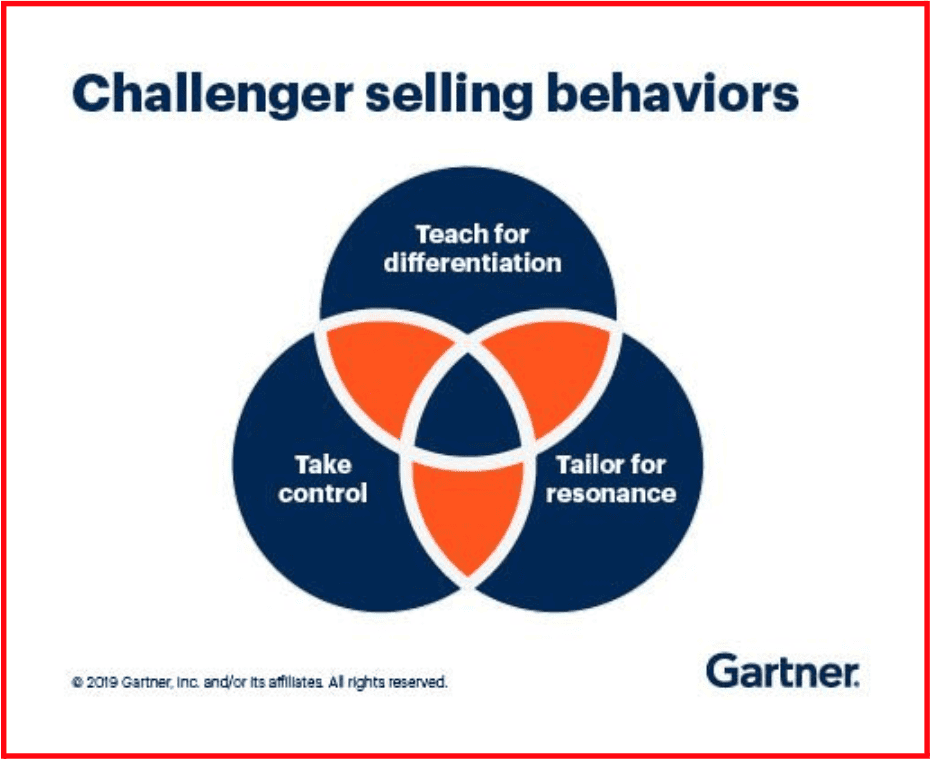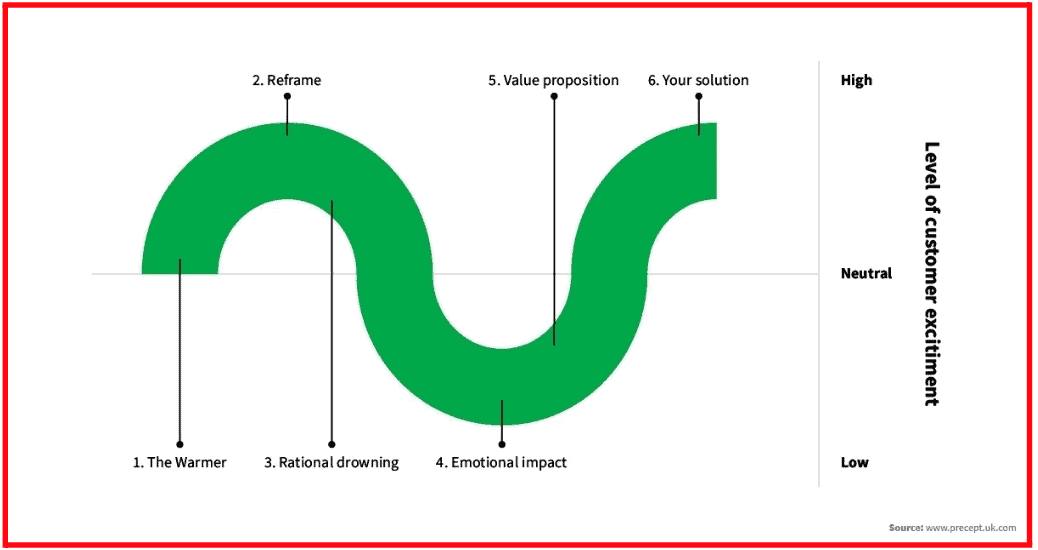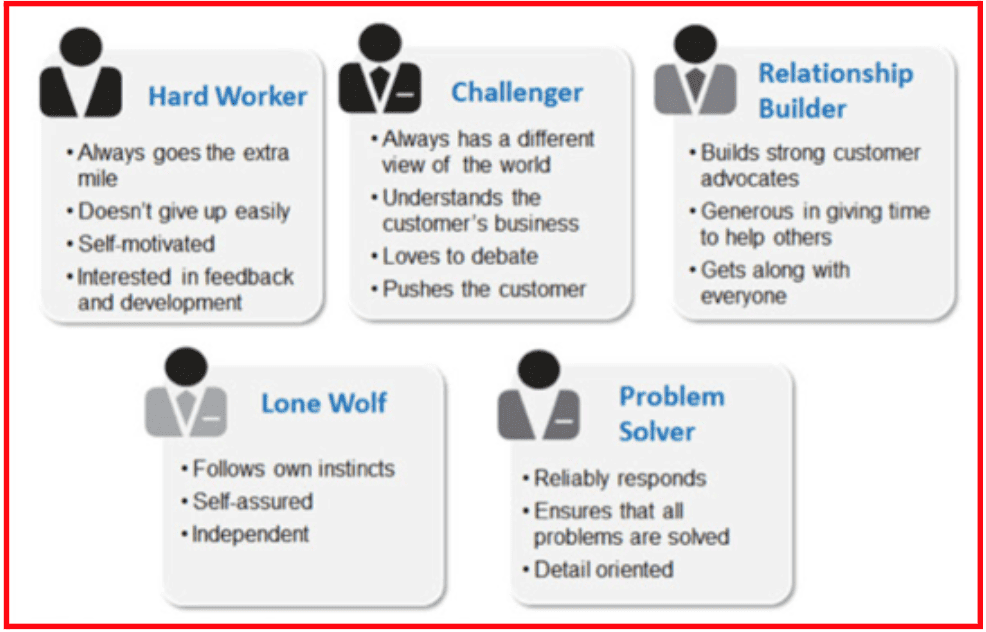A book by Brent Adamson and Matthew Dixon named ‘The Challenger Sale’ is quite popular amongst salespeople.
Intended for B2B companies, the book introduces a new sales methodology known as the ‘challenger sales model.’
The challenger sales model, or the sales challenger model, encourages sales professionals to emulate the way high-performing sales reps work.
It includes training sales team members on how to deal with difficult situations, taking control of sales deals, and tailoring their communication according to their prospects.
However, the challenger sales model is more than about building relationships and problem-solving skills.
It largely focuses on the personality of the sales reps that are effective in sealing the deal.
In this post, we will learn how this sales challenger model helps you understand each type of rep’s different values and skills and how you can use them to deliver outstanding sales pitches.
Table of Contents
How Does a Challenger Sales Model Work?

In a challenger sales model, salespersons use three distinct attributes to demonstrate their skills.
These include Teach, Tailor, and Take control. Also known as the three Ts of sales, let us focus on what these terms mean.
#1. Teach
A challenger sales rep uses the teach-for-differentiation technique to understand the needs of their customers, using their ability for a two-way dialogue during the sales interactions.
#2. Tailor
Based on the economic needs and expectations of their customers, challenger sales reps tailor their message to convince clients to purchase their products or services
#3. Take control
Since challenger sales reps spend time trying to understand their consumers’ financial needs, they can take control and discuss money matters and use strong persuasion techniques to close sales deals.
The challenger sales model is primarily a teaching-based sales model that focuses on two key factors, insights into an underlying problem and the solution to that problem.
Even if your buyer is unaware that the problem exists, as a challenger sales rep, you are expected to educate them about the issue and how your product or service is the best way to overcome it.
Read also: The Sales CHAMP Framework and How It Can Help Your Business
The Framework of the Challenger Sales Model

To maximize lead conversion and deal closing, the challenger sales model follows the below steps.
#1. The Warmer
The first and foremost step includes your sales reps describing the problem to customers in a way that convinces them about its existence and compels them to look for solutions.
#2. The Reframe
Once the sales agent has described the problem to the prospect, they will then try and persuade them to think about it in a unique way that the buyer had not considered earlier.
#3. Rational Drowning
In the third step, when the buyer starts seeking solutions to solve the problem, the sales rep informs them about the costs associated with it. As a result, the client might feel concerned or worried about the problem.
#4. Emotional Impact
To ease the burden off the customer, the challenger sales rep describes how the problem affects other companies or buyers and how they managed to overcome it.
#5. New Ways
The salesperson now educates the buyer about the behavioral changes they would need to learn in order to resolve the problem.
#6. Your Company’s Solutions
The sales rep then closes the deal by introducing the solution best suited to the buyer’s needs and how it will help them adopt the behavior better than any other approach.
How to Become a Sales Director: Skills, Qualifications, Salaries, and JD
Types of Salespersons in the Challenger Sales Model

According to the challenger sales methodology, there are five types of sales agents – the hard worker, the challenger, the relationship builder, the lone wolf, and the problem solver.
Let us learn about each of them.
#1. The Hard Worker
As the name suggests, a hard worker is a type of salesperson who is willing to go the extra mile to achieve their targets.
They are usually self-motivated and driven, don’t give up easily, and constantly look for ways to improve their performance.
As a result, you might find them often asking for feedback or questions on personal development.
Hard workers tend to stay up late at work and can possibly make more calls and meet with more prospects in a week compared to their peers.
However, in their quest to accomplish their goals, hard workers may ignore their customers’ value drivers and only emphasize closing the maximum number of deals.
#2. The Challenger
A sales rep who identifies as a challenger applies the three Ts of sales to close deals. They focus on convincing customers to look at a problem from a unique perspective, tailor their message based on the client’s economic needs, and take control of the conversation by discussing money matters.
Challengers love to debate and are not afraid to express any controversial views.
They are assertive, have a deep understanding of their customer’s expectations, and are able to pressure them into making a purchase.
#3. The Relationship Builder
The relationship builder is considered the ideal sales rep.
Such salespersons focus on developing strong professional and personal relationships with clients as well as other employees in the organization.
Relationship builders are considered the quintessential consultative rep.
They are generous with their time, do everything possible to fulfill their customers’ expectations, and work diligently to resolve any concerns or queries that may arise in relationships with clients.

#4. The Lone Wolf
The lone wolf, as the name suggests, is a sales agent who is not necessarily a team player.
Such salespersons are mostly self-motivated, confident in their selling capabilities, and naturally able to succeed on their own.
They prefer to work alone rather than in a team.
As a result, lone wolves are usually hard to manage, known to break the rules, and prefer to do things either their own way or in no way at all.
Although the lone wolf is the least common of all salespeople, they are known to deliver.
#5. The Problem Solver
The problem solver is someone who is constantly looking for solutions to their client’s problems.
Such sales reps are highly detail-oriented, regularly interact with stakeholders, and are considered highly reliable by their team.
Moreover, problem solvers ensure that all customer-service issues are resolved quickly without any delay and emphasize greatly on post-sales follow-ups.
As a result, they are among the most preferred people on any sales team.
But the issue arises when all different personalities come together to work in a team. This is why you need to implement a challenger sales model – using which, you can train them and ensure that they can achieve their targets on time.
10 Sales Productivity Tools That You’d Want To Buy Today
How to Implement a Challenger Sales Model?
To introduce the challenger sales model in your organization, here is how you should train your sales rep according to their personality types.
#1. Coaching a Hard Worker
If you are training a hard worker, you should emphasize the teaching aspect of the challenger sales model.
This includes coaching them on how to develop a deep understanding of their customer’s needs and expectations and then creating a two-way dialogue.
Since hard workers are keen on achieving their goals in any way possible, they might, at times, skip focusing on their client’s needs.
Further, as hard workers constantly seek feedback, ensure that you communicate with them regularly on how they can perform better.
However, ensure to give credit where it is due since it is one of the key motivators of hard workers.
#2. Coaching a Lone Wolf
A lone wolf is a highly efficient sales rep, and they might even have a great sales record. But they often lack the skills for teamwork.
To coach a lone wolf, you need to train them to have meaningful two-way conversations with both team members and customers.
Your emphasis should be on instilling qualities that allow them to be a team builder.
But at the same time, provide them space to figure out how they can work better with their teammates.
#3. Coaching a Relationship Builder
Although relationship builders focus highly on fostering strong client relationships, they are typically less assertive.
Being firm and confident is one of the key aspects of the challenger sales model, so relationship builders should be coached on topics such as ‘building pressure’ and ‘taking control’.
Such sales reps should also be trained in discussing money-related topics to ensure that they can take matters into their own hands and direct conversations with customers.
#4. Coaching a Problem Solver
The issue with problem-solvers is that they stick to tried and tested ways of overcoming a challenge.
While coaching them, you need to train them on how they can have a unique perspective on different customers’ issues.
Ask them to create a sales pitch that is personalized to meet every customer’s needs.
7 Steps To Sell Anything With The Sandler Sales Methodology
Wrap Up
A challenger sales model trains sales agents to close deals faster.
The methodology teaches them to convince buyers that a problem exists and how their brand’s product or service is the best approach to solve it.
Using this model, you can leverage the different personalities of all your sales reps and mold their skills to maximize revenue.
